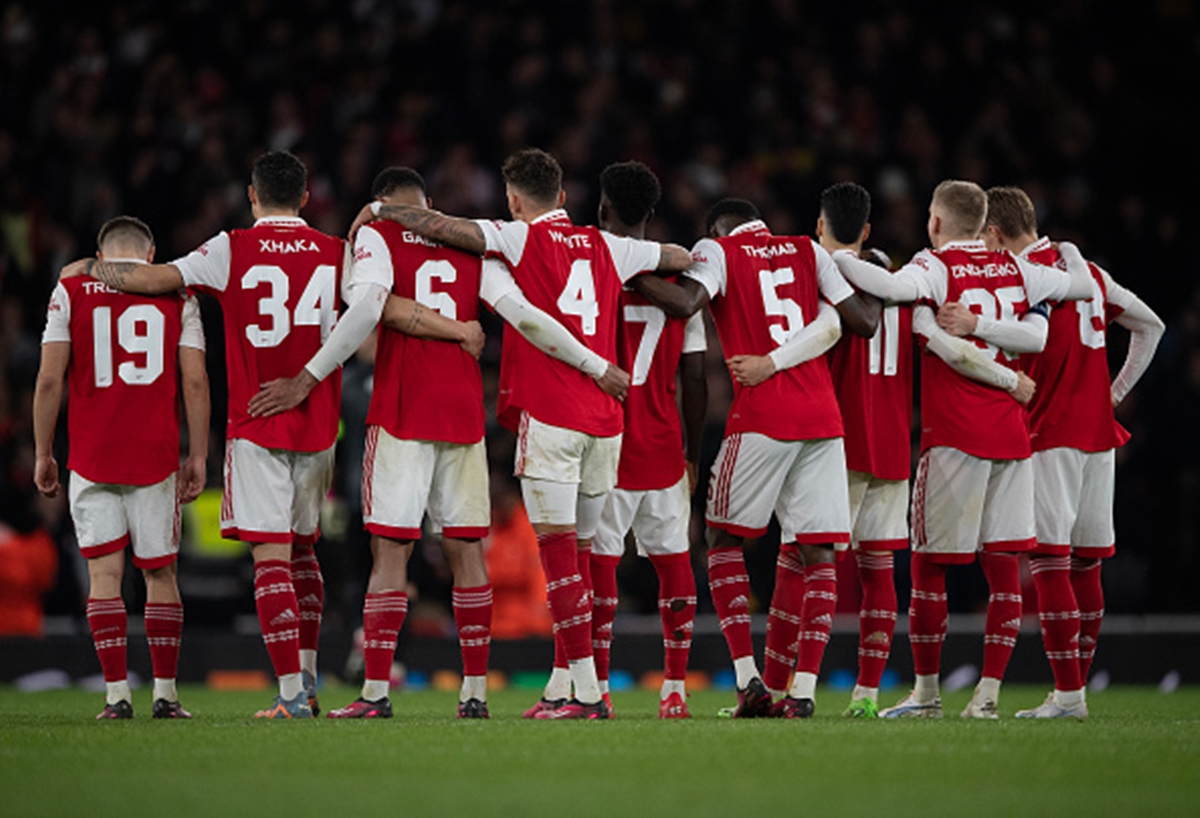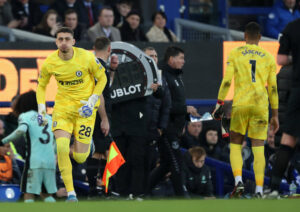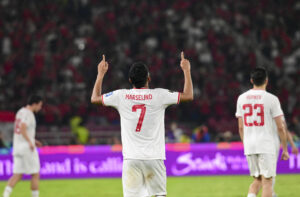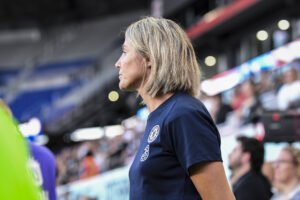For weeks now, Arsenal have felt like someone nervously inching towards a trapdoor or even a cliff edge. With each successive draw, their lead over Manchester City has dwindled further, to the extent that they are now faced with what was always the nightmare scenario: having to go away to The Etihad and win, after 11 successive league defeats, home and away over five years, against City. It seems like an impossible task. But if Mikel Arteta and his team are to do it, perhaps they can draw inspiration from the ultimate impossible task in club history: winning the title at Anfield in 1989.
Like Graham In 1989, Arteta Must Be Brave And Reshape Arsenal Defence
In May 1989, George Graham’s Arsenal side were in almost exactly the same position that Mikel Arteta’s team are in now. After a number of disappointing draws had meant that they had surrendered a once-commanding lead at the top of the League (the old First Division), they had to go away to the then-dominant side in England and win. Indeed, they not only had to win but they had to win by two clear goals, to take the title on goal difference.
If the Gunners winning at The Etihad now seems almost unthinkable, then Arsenal winning at Anfield in 1989 was almost completely unthinkable. At the time, Liverpool enjoyed a stranglehold over the English league title that arguably no other side has achieved before or since, not even Alex Ferguson’s all-conquering Manchester United side of the 1990s and noughties, let alone Pep Guardiola’s Manchester City side now.
Read More: Arsenal’s Five Finest Title Run-Ins To Date
In the fifteen years between 1973 and 1988, the Reds had won 10 League titles, including a hat-trick of wins between 1982 and 1985, which was the first time that that feat had been achieved in English top-flight football since Arsenal themselves in the 1930s. In addition, they had won four European Cups (the original version of the Champions League) and reached one other European Cup final. And they would almost certainly have won more European Cups if they and every other English team had not been banned from competing in European football after the Heysel stadium disaster at the 1985 European Cup Final.
Consequently, for Arsenal to go to Anfield and win by two clear goals seemed so unlikely that it was almost absurd. Most Arsenal fans travelled to Anfield or watched at home on television (in one of the rare league games shown live on television before the advent of the Premier League three years later) in fairly forlorn hope rather than with any kind of expectation. But what followed proved that anything is possible in football – even the current Arsenal side winning at The Etihad this Wednesday.
Graham’s Defensive Masterstroke
Arsenal won that game at Anfield in 1989, which really marks the birth of the new Arsenal that Arsène Wenger would eventually inherit and take to even more success, for two main reasons: first, George Graham was incredibly brave in his team selection; and, secondly, as a result he completely reshaped his defence for the occasion.
When the starting eleven for that game in 1989 was announced, many contemporary commentators and viewers thought that there must have been some kind of error and that the wrong team sheet had been handed in. That was because, for a game in which his side had to win by two clear goals, Graham had chosen three centre-backs: Tony Adams; Steve Bould; and David O’Leary.
At the time, before the match, it seemed completely counter-intuitive. How, critics and pundits wondered, were Arsenal possibly going to score the goals they needed when they had selected a five-man defence? If the clubs’ chances before the game had seemed slim, then with the announcement of the team it seemed that they had become completely non-existent.
However, in reality, it was actually the ultimate example of Graham’s tactical genius, specifically his defensive genius. Graham rightly anticipated that Liverpool, fired up by all the emotion of trying to win the League at home (and with it a League and Cup Double), barely a month after the Hillsborough tragedy, which had killed 97 Liverpool fans and inevitably prolonged the League campaign to the end of May, would come out all guns blazing at The Gunners. And that’s exactly what happened.
However, with his three-man central defence repelling all the early Liverpool attacks, Graham knew that if his side could stay in the game long enough, even with the score still at 0-0, they might have a chance late on to win it, even by the two clear goals they needed. And so it transpired, with Alan Smith scoring a goal soon after half-time and Michael Thomas eventually hitting the latest and greatest of all late winners deep into injury time. But none of that would have been possible if the manager had not shored up his defence from the start.
Now Arteta Needs To Do The Same
Now, in 2023, Arteta needs to do exactly the same as Graham in 1989: be brave in his team selection; and reinforce his defence in anticipation of an early Manchester City onslaught at The Etihad.
Ever since the needless injury to William Saliba in the Europa League (a game that Saliba should not have been playing in, to protect him for the Premier League), the Arsenal defence, particularly the central defence, has looked like a shadow of the impressive unit that it had been all season. In particular, in the last three matches, they have conceded seven goals, which was almost as many as they had conceded in all the League games prior to the World Cup.
The reason is simple. In Saliba’s absence, Arteta has been reduced to playing his fourth-choice centre-half, Rob Holding, in partnership with Gabriel at the heart of the Gunners’ backline. He was obviously unable to reunite Gabriel with Ben White, his central defensive partner last season, because White was required to continue at right-back, where he has done so well this season, after the injury to the only other right-back in the squad, Takehiro Tomiyasu, in the same ultimately meaningless Europa League game.
Read More: Single-Minded Arsenal Can Beat Treble-Chasing City To The League
As has now been proven for two seasons running, Holding and Gabriel is not a good central defensive pairing. That is not to blame Holding, the very definition of an honest trier, alone. For whatever reason, he and Gabriel do not seem to gel well together, each one exacerbating the other’s nervousness, to the point where they barely seem to function at all as a partnership. The result has been a reduction in the effectiveness of the whole defence, such that Arsenal have surrendered two-goal leads against both Liverpool and West Ham before shipping a hat-trick of goals to bottom-side Southampton at home last time out.
It should also be added that the weakening of the defence has coincided with a fairly disastrous loss of form for Thomas Partey, the team’s main defensive midfielder. This season, for the first time since his arrival at The Emirates in 2020, Partey has been sufficiently fit to play most of Arsenal’s games and he has been supremely impressive – until recently, when he seems to have reverted to the nervous, fitful, injury-prone player that he was for most of his first two seasons at the club.
It Will Be Risky, But The Biggest Risk Is Doing Nothing
Now, ahead of The Etihad game, Arteta must bite the biggest bullet of all and, like Graham in 1989 for his own trip to a Northern Powerhouse, bravely reshape his defence to give his team any chance of victory.
First, he must reunite Gabriel and White in central defence. Although it would be White’s first outing in the centre of the backline all season, he has been so impressive for Arsenal in whatever position he plays that he will surely regain his feet in that position quickly. Indeed, given that he is capable of playing at centre-back, full-back and even in defensive midfield if necessary (as he did at Leeds and Brighton), there is an argument that White is the best all-round defensive player in the Premier League.
With White moving back into central defence, someone else must play at right-back and in Tomiyasu’s absence there is no obvious candidate. With Cedric Soares now on loan at Fulham, there is no other orthodox right-back, so Arteta must play one of his two left-backs, Oleksandr Zinchenko or Kieran Tierney, there. The only other alternative is to select a youth-team player who is more used to playing at right-back, and who is naturally right-footed. However, given that that would entail a first-team debut away at the reigning champions, picking one of the more experienced Zinchenko or Tierney is surely preferable.
It must be emphasised that this is what might be called, in light of what has happened to the world in recent years, a Covid choice: that is, a choice made from a selection of options that are all bad. Of course, it is not ideal to play a naturally left-footed player at right-back for the first time in their Arsenal career (and possibly for the first time in their whole career), especially against the Citizens and their plethora of left-sided attackers (Grealish, Mahrez, Foden et al).
However, the bigger risk would be doing nothing. If Arteta plays the same back four, in the same positions, that he has chosen for the last three games, it is surely impossible to see anything other than an Arsenal defeat, and one achieved early on in the game. If, however, he draws on the inspiration of his predecessor’s bold move at Anfield in 1989, he might – stress, might – have a chance of achieving arguably Arsenal’s greatest-ever away victory since then.






